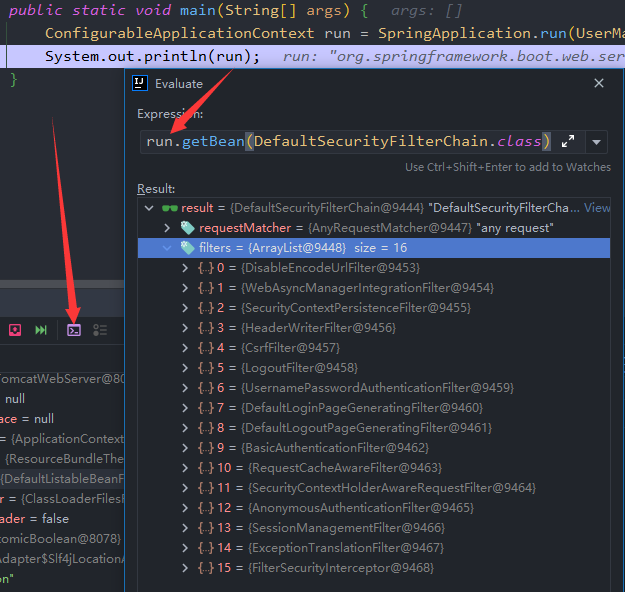1
2
3
4
5
6
7
8
9
10
11
12
13
14
15
16
17
18
19
20
21
22
23
24
25
26
27
28
29
30
31
32
33
34
35
36
37
38
39
40
41
42
43
44
45
46
47
48
49
50
51
52
53
54
55
56
57
58
59
60
61
62
63
64
65
66
67
68
69
70
| @Getter
@AllArgsConstructor
public enum ResultEnum {
CONTINUE(100, "Continue", "继续"),
SWITCHING_PROTOCOLS(101, "Switching Protocols", "切换协议"),
PROCESSING(102, "Processing", "处理中"),
SUCCESS(200, "Success", "成功"),
CREATED(201, "Created", "已创建"),
ACCEPTED(202, "Accepted", "已接受"),
NON_AUTHORITATIVE_INFO(203, "Non-Authoritative Information", "非权威信息"),
NO_CONTENT(204, "No Content", "无内容"),
RESET_CONTENT(205, "Reset Content", "重置内容"),
PARTIAL_CONTENT(206, "Partial Content", "部分内容"),
MULTI_STATUS(207, "Multi-Status", "多状态"),
MULTIPLE_CHOICES(300, "Multiple Choices", "多种选择"),
MOVED_PERMANENTLY(301, "Moved Permanently", "永久移动"),
FOUND(302, "Found", "临时移动"),
SEE_OTHER(303, "See Other", "查看其他位置"),
NOT_MODIFIED(304, "Not Modified", "未修改"),
USE_PROXY(305, "Use Proxy", "使用代理"),
UNUSED(306, "Unused", "未使用"),
TEMP_REDIRECT(307, "Temporary Redirect", "临时重定向"),
BAD_REQUEST(400, "Bad Request", "错误请求"),
UNAUTHORIZED(401, "Unauthorized", "未授权"),
PAYMENT_REQUIRED(402, "Payment Required", "需要付费"),
FORBIDDEN(403, "Forbidden", "禁止"),
NOT_FOUND(404, "Not Found", "未找到"),
METHOD_NOT_ALLOWED(405, "Method Not Allowed", "方法不允许"),
NOT_ACCEPTABLE(406, "Not Acceptable", "不接受"),
PROXY_AUTH_REQUIRED(407, "Proxy Authentication Required", "需要代理认证"),
REQUEST_TIMEOUT(408, "Request Timeout", "请求超时"),
CONFLICT(409, "Conflict", "冲突"),
GONE(410, "Gone", "已删除"),
LENGTH_REQUIRED(411, "Length Required", "需要长度"),
PRECON_FAILED(412, "Precondition Failed", "前提条件失败"),
ENTITY_TOO_LARGE(413, "Request Entity Too Large", "请求实体过大"),
URI_TOO_LONG(414, "Request-URI Too Long", "请求URI过长"),
UNSUPPORTED_MEDIA_TYPE(415, "Unsupported Media Type", "不支持的媒体类型"),
RANGE_NOT_SATISFIABLE(416, "Requested Range Not Satisfiable", "请求范围不符合"),
EXPECTATION_FAILED(417, "Expectation Failed", "期望失败"),
TEAPOT(418, "I'm a teapot", "我是一个茶壶"),
MISDIRECTED_REQUEST(421, "Misdirected Request", "错误的请求"),
UNPROCESSABLE_ENTITY(422, "Unprocessable Entity", "无法处理的实体"),
LOCKED(423, "Locked", "锁定"),
FAILED_DEPENDENCY(424, "Failed Dependency", "依赖失败"),
TOO_EARLY(425, "Too Early", "太早"),
UPGRADE_REQUIRED(426, "Upgrade Required", "需要升级"),
RETRY_WITH(449, "Retry With", "请重试"),
LEGAL_REASONS(451, "Unavailable For Legal Reasons", "因法律原因不可用"),
FAIL(500, "Internal Server Error", "内部服务器错误"),
NOT_IMPLEMENTED(501, "Not Implemented", "未实现"),
BAD_GATEWAY(502, "Bad Gateway", "错误网关"),
SERVICE_UNAVAILABLE(503, "Service Unavailable", "服务不可用"),
GATEWAY_TIMEOUT(504, "Gateway Timeout", "网关超时"),
HTTP_VERSION_NOT_SUPPORTED(505, "HTTP Version Not Supported", "HTTP版本不支持"),
VARIANT_NEGOTIATES(506, "Variant Also Negotiates", "变体协商"),
INSUFFICIENT_STORAGE(507, "Insufficient Storage", "存储不足"),
BANDWIDTH_EXCEEDED(509, "Bandwidth Limit Exceeded", "带宽超限"),
NOT_EXTENDED(510, "Not Extended", "未扩展"),
UNPARSEABLE_HEADERS(600, "Unparseable Response Headers", "无法解析的响应头");
private final Integer code;
private final String msg;
private final String description;
}
|



